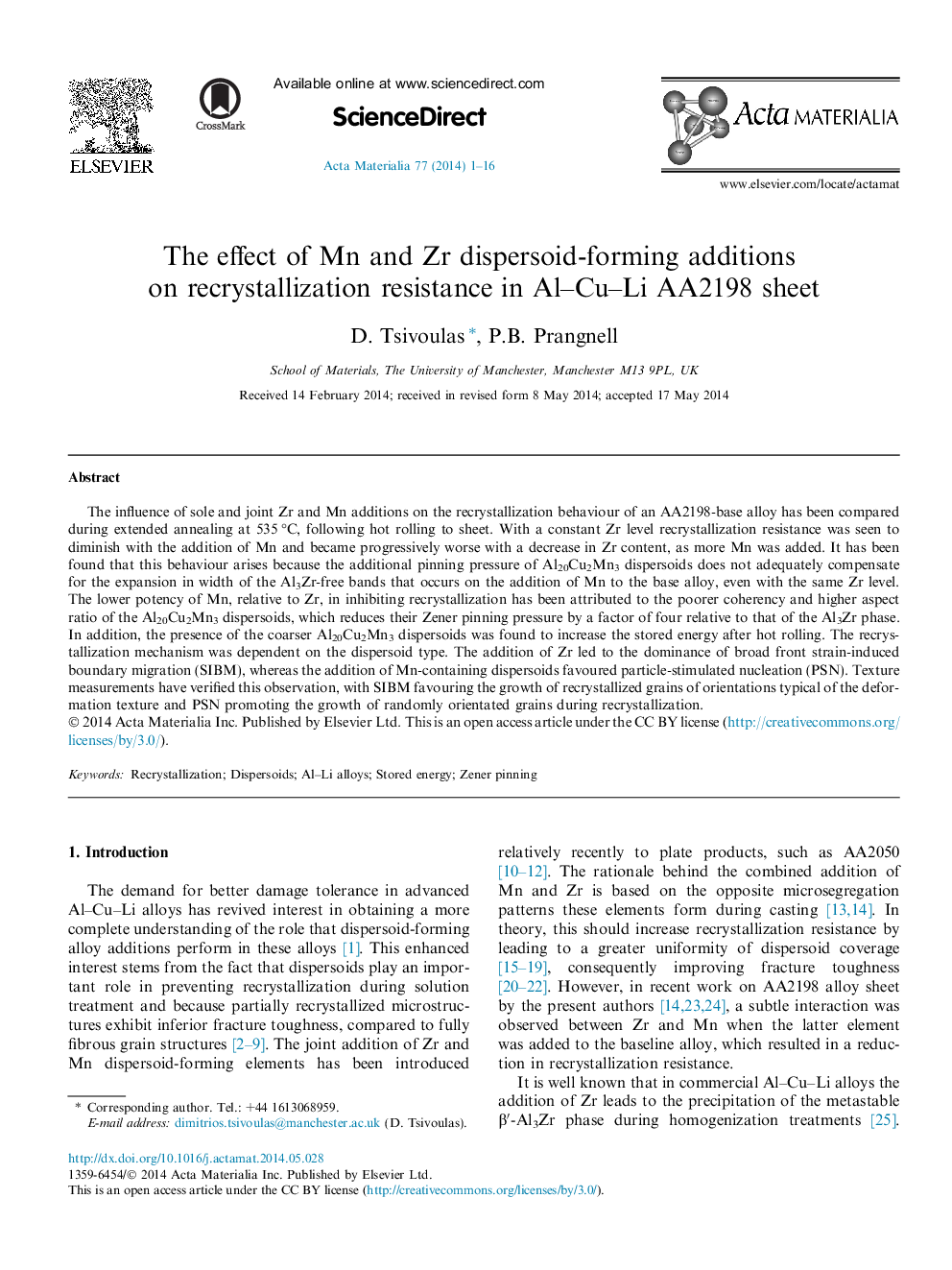| Article ID | Journal | Published Year | Pages | File Type |
|---|---|---|---|---|
| 7881304 | Acta Materialia | 2014 | 16 Pages |
Abstract
The influence of sole and joint Zr and Mn additions on the recrystallization behaviour of an AA2198-base alloy has been compared during extended annealing at 535 °C, following hot rolling to sheet. With a constant Zr level recrystallization resistance was seen to diminish with the addition of Mn and became progressively worse with a decrease in Zr content, as more Mn was added. It has been found that this behaviour arises because the additional pinning pressure of Al20Cu2Mn3 dispersoids does not adequately compensate for the expansion in width of the Al3Zr-free bands that occurs on the addition of Mn to the base alloy, even with the same Zr level. The lower potency of Mn, relative to Zr, in inhibiting recrystallization has been attributed to the poorer coherency and higher aspect ratio of the Al20Cu2Mn3 dispersoids, which reduces their Zener pinning pressure by a factor of four relative to that of the Al3Zr phase. In addition, the presence of the coarser Al20Cu2Mn3 dispersoids was found to increase the stored energy after hot rolling. The recrystallization mechanism was dependent on the dispersoid type. The addition of Zr led to the dominance of broad front strain-induced boundary migration (SIBM), whereas the addition of Mn-containing dispersoids favoured particle-stimulated nucleation (PSN). Texture measurements have verified this observation, with SIBM favouring the growth of recrystallized grains of orientations typical of the deformation texture and PSN promoting the growth of randomly orientated grains during recrystallization.
Related Topics
Physical Sciences and Engineering
Materials Science
Ceramics and Composites
Authors
D. Tsivoulas, P.B. Prangnell,
